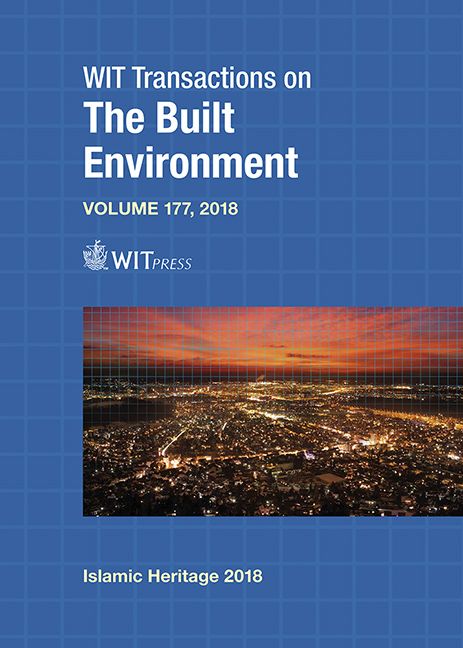INVESTIGATING THE ENVIRONMENTAL PERFORMANCE OF THE WIND CATCHER IN JEDDAH
Price
Free (open access)
Transaction
Volume
177
Pages
12
Page Range
15 - 26
Published
2018
Size
605 kb
Paper DOI
10.2495/IHA180021
Copyright
WIT Press
Author(s)
MADY MOHAMED, MOHAMMED F. M. MOHAMMED
Abstract
With the emerging extensions to the City of Jeddah and the creation of the new urban agglomerations, arises a definite potential to enhancing environmental sustainability. This research explores the relationship between the traditional passive tools and their sustainable and transcendent qualities. People from ancient times used to employ traditional strategies and measures in their buildings. Both materials and technologies used since ancient times have allowed many vernacular architectures to last thousands of years. Some were made out of permanent materials such as stone while others were made out of more ephemeral materials such as adobe bricks or cob walls. However, vernacular measures such as Courtyard, Malqaf, Mashrabia, and Takhtaboush started to be abandoned in Jeddah. The main interest of the new trends in construction should progressively increase. However, these trends shall be undertaken by attempting to achieve the paradigm of sustainability in order to minimize the environmental impact of construction and its harmful effects on environment and human being such as the SBS (Sick Building Syndromes). Consequently, the overall durability of built structures and their eco responsiveness need to be assessed in order to enable new developers determine a more sustainable future plans. This paper is a part of an ongoing research project funded by KACST (King Abdul-Aziz City for Science and Technology) aims at investigating the potential of re-implementing the wind catcher in Jeddah’s new residential buildings to address the climate-related aspects of Jeddah City to allow coping with the current and future needs and technologies. The current paper is aiming at investigating the environmental performance of the wind catcher and how such measures can enhance the IEQ (Internal Environment Quality). This is achieved through conducting a literature review on wind catcher and conducting a pilot study in AL-Balad (The old district in Jeddah).
Keywords
wind catcher, passive strategies and measures, heritage interventions




